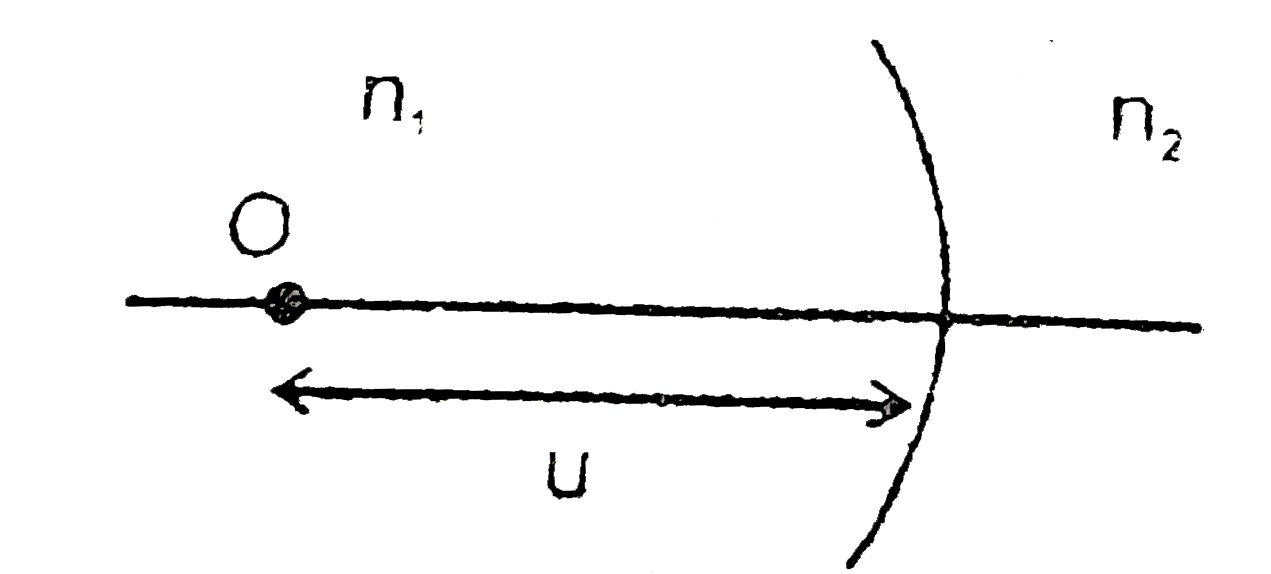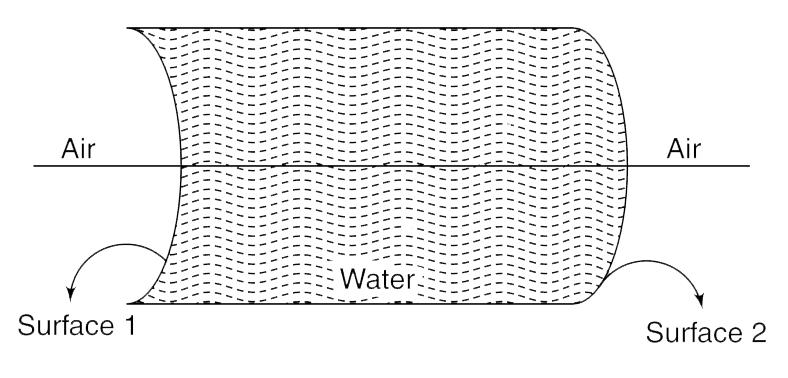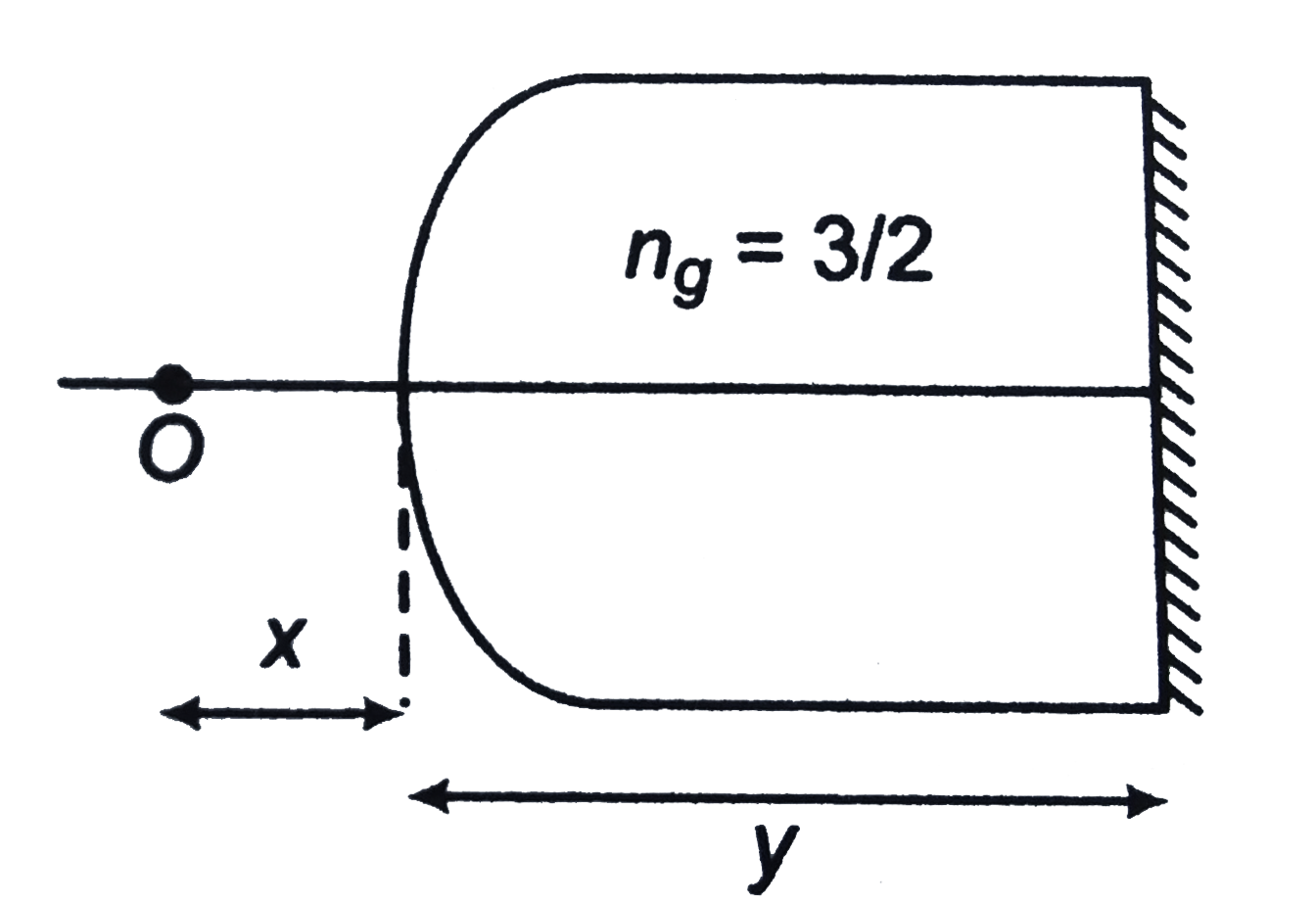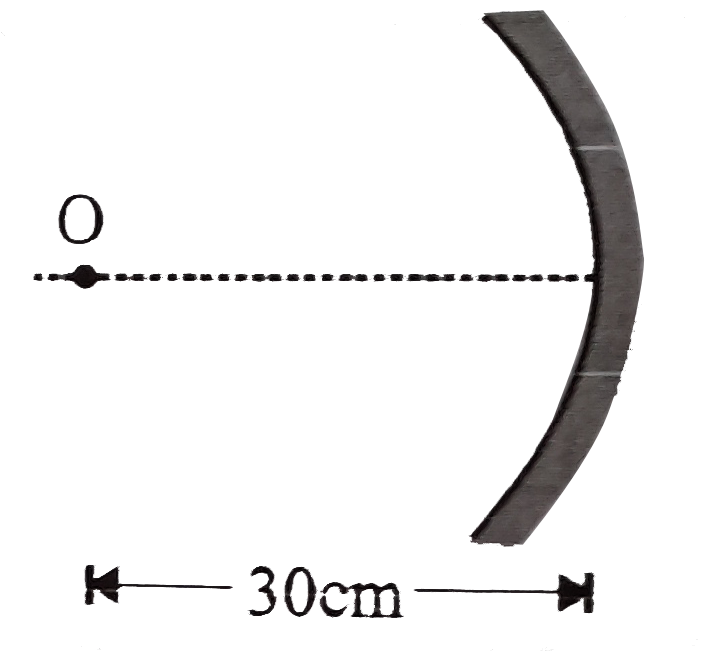All objects referred to the subsequent problems lie on the principal axis.

If light is incident on surface 1 from left, the image formed after the first refraction is definitely :
Real for a real object
Virtual for a real object
Real for a virtual object
Virtual for a virtual object
The correct Answer is:B
μ2v=μ1u+(μ2−μ1R)
(μ2−μ1) is +ve and R is −ve if u is −ve,v will always be −ve
i.e. for real object image is always virtual.

Topper's Solved these Questions
- BOOK - RESONANCECHAPTER - DAILY PRACTICE PROBLEMEXERCISE - DPP No.1120videos
DAILY PRACTICE PROBLEM
- BOOK - RESONANCECHAPTER - DAILY PRACTICE PROBLEMEXERCISE - DPP No.129videos
DAILY PRACTICE PROBLEM
- BOOK - RESONANCECHAPTER - DAILY PRACTICE PROBLEMEXERCISE - DPP No.920videos
DAILY PRACTICE PROBLEM
- BOOK - RESONANCECHAPTER - CURRENT ELECTRICITYEXERCISE - High Level Problems (HIP)21videos
CURRENT ELECTRICITY
- BOOK - RESONANCECHAPTER - ELECTRO MAGNETIC WAVESEXERCISE - Exercise 327videos
ELECTRO MAGNETIC WAVES
Similar Questions
A region bounding water has air on two sides. Tell the nature (real or virtual) of the image for following cases- (The object is real and lies on the principal axis (see fig) in all cases.)
(a) The object is to the left of surface 1 and the image to be considered is formed after the first refraction.
(b) The object is to the left of surface 1 and the image to be considered is formed after two refractions.
(c) The object is to the right of second surface and the image to be considered is formed after one refraction.
 View Solution
View SolutionAn equiconvex lens of refractive index 1.5 has its two surfaces having radius of curvature of 30 cm. A point object has been placed on the principal axis at a distance of 60 cm from the lens. Find the distance of image from the lens formed by the rays which suffer refraction at first surface, reflection at second surface, again a reflection on the first surface and finally a refraction from the second surface.
View Solution
Knowledge Check
- Question 1 - Select One
All objects referred to the subsequent problems lie on the principal axis.

If light is incident on surface 2 from right then which of the following is true for images formed after a single refraction.AReal object will result in a real imageBVirtual object will result in a virtual imageCReal object will result in a virtual imageDVirtual object will result in a Real image - Question 2 - Select One
All objects referred to the subsequent problems lie on the principal axis.

In above question if the object is real, then the final image formed after two refractions :Amay be realBmay be virtualCmust be virtualDboth A and B - Question 3 - Select One
In the figure shown , a point object O is placed in air on the principal axis. The radius of curvature of the spherical surfaces is 60cm. I is the final image formed after all reflections and refractions.
 AIf x=120cm, then I is formed on O for any value of yBIf x=240cm, then I is formed on O for any value of y=360cmCIf x=240cm, then I is formed on O for any value of yDNone of these
AIf x=120cm, then I is formed on O for any value of yBIf x=240cm, then I is formed on O for any value of y=360cmCIf x=240cm, then I is formed on O for any value of yDNone of these
Derive the mathematical relation between refractive indices n1 and n2 of two media and radius of curvature R for refraction at a convex spherical surface. Consider the object to be a point one lying on the principal axis in rarer medium of refractive index nt and a real image formed in the denser medium of refractive index n2. Hence, derive lens maker's formula.
(ii) Light from a point source in air falls on a convex spherical glass surface of refractive index 1.5 and radius of curvature 20 cm. The distance of light source from the glass surface is 100 cm. At what position is the image formed ?View Solution(i) Device the mathematical n between refractive indices n1 and n2 of two radii and radius of curvature R for refraction at a convex shperical surface. Consider the object to be a point since lying on the principal axis in rarer medium of refractive index n1 and a real image formed in the denser medium of refractive index n2. Hence, derive lens marker's formula.
(ii) Light from a point source in air falls on a convex spherical glass surface of refractive index 1.5 and radius of curvature 20cm. The distance of light source from the glass surface is 100cm. At what position is the image formed ?View SolutionA thin lens made of a material of refractive indexμ2 has a medium of refractive index μ1 on one side and a medium of refractive index on the other side. The lens is biconvex and the two radii of curvature have equal magnitude R. A beam of light travelling parallel to the principal axis is incident on the lens. Where will the image be formed if the beam is incident from (a) the medium p, and (b) from the medium μ3?
View SolutionA plano-convex lens P and a concavo-convex lens Q are in contact as shown in figure. The refractive index o fthe material of the lens P and Q is 1.8and1.2 respectively. The radius of curvature of the concave surface of the lens Q is double the radius of curvature of the convex surface. The convex surface of Q is silvered.

An object is placed on the placed on the principal axis at a distance 10cm form the plane surface. The image is formed at a distance 40cm from the plane surfaces on the same side. The focal length of the system isView SolutionAn object is present on the principal axis of a concave mirror at a distance 30cmfrom it.Focal length of mirror is20cm

Image formed by mirror isView Solution

